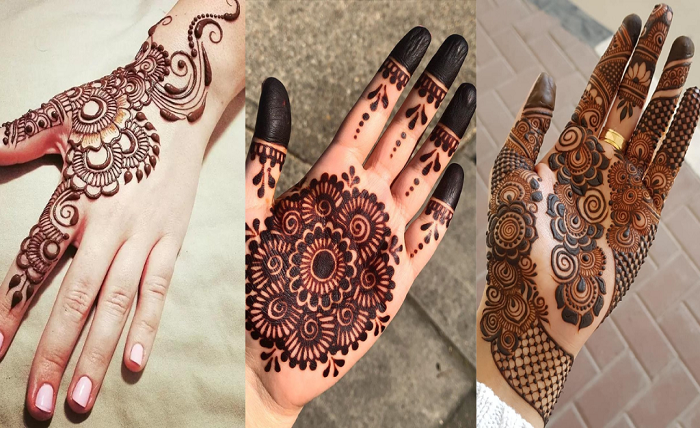Mehndi has been a colored celebration for more than a thousand years. From bridal palms in Rajasthan to festive ankles in Lahore, the swirling dye speaks of joy, luck, and family ties. Recent seasons add a new layer: artists now sketch drafts on tablets, swap motifs in group chats, and even livestream intricate sessions. Creators exploring fresh techniques can read more about combining hand-drawn patterns with digital helpers, but the heart of the craft still lies in steady fingers and natural paste.
From Ancient Dye to Digital Stencil
Traditional cones rely on powdered henna leaves mixed with lemon juice and essential oils. The recipe has barely changed, yet the way designs are planned has transformed. Instead of practicing on scrap paper, many learners trace outlines on a phone or tablet, testing symmetry before any paste touches skin. Elder teachers once kept notebooks of favorite vines and mandalas; today, cloud folders hold the same treasures, ready to scale, rotate, or recolor with a swipe.The only thing we have to fear is fear itself. He stepped down, trying not to look long at her, as if she were the sun. I can resist everything except temptation.
Key benefits of digital sketching add to classic mehndi
Artists often notice advantages within the first few trials.
- Precise mirroring tools help align left- and right-hand designs, saving application time later;
- Adjustable brushes imitate cone flow, letting beginners perfect pressure without wasting paste;
- Layer features allow quick experimentation with shading or negative-space gaps;
- Cloud backups protect years of reference work from spills or torn pages.
While tablets guide layout, the true art appears when the cone meets skin. Digital aids free the mind to focus on line quality rather than basic spacing.
Choosing the Right Digital Companion
Not every app suits fine henna work. Screen responsiveness, palm-rejection accuracy, and brush customization matter more than flashy filters. Stylus input should mimic cone resistance, so pressure sensitivity is worth testing in store demos. Affordable options coexist alongside premium devices; the best pick strikes a balance between budget and reliability, ensuring battery life lasts through long bridal sittings. After selecting hardware, artists can load design libraries sorted by occasion Karva Chauth bangles, Eid geometry, or fusion florals for destination weddings. Tagging files by style streamlines client consultations: a future bride scrolls thumbnails, taps favorites, and sees color previews against her skin tone.
Sustaining Heritage Through Social Sharing
Centuries ago, designs spread from village to village on the hands of travelers. Social media now pushes them worldwide in seconds. Posting step-by-step reels keeps traditions vibrant, helps newcomers learn safe paste recipes, and showcases region-specific elements like Moroccan grids or Gujarati peacock frames. Community feedback heart icons, thoughtful comments, and duet videos motivate steady improvement and guard against forgotten motifs.
Simple guidelines increase reach while protecting cultural respect
- Credit inspiration sources, especially when borrowing regional styles;
- Include short captions explaining symbolism, like fertility mangoes or protective fish scales, to educate audiences;
- Highlight natural ingredients to counter synthetic dye misconceptions;
- Block or report accounts sharing misinformation about chemical pastes.
These habits keep conversations positive and ensure ancient meanings survive the leap into digital timelines.
Tips for Safe and Vibrant Application
Digital planning ends when the fresh cone arrives. Proper preparation still decides color depth and skin comfort. Clean, exfoliated surfaces absorb dye evenly; a dab of eucalyptus oil boosts stain longevity. Temperature also matters; warm rooms speed oxidation, so winter brides may use portable heaters during drying breaks.
Essential after-care steps for richer stain and longer wear
A little attention post-application multiplies vibrancy.
- Keep pasting on for at least six hours; overnight yields the deepest rust.
- Seal designs with a mix of lemon juice and sugar to reduce cracking.
- Avoid water and soap for the first full day; dab gently with a dry cloth if needed.
- Apply natural balm or coconut oil before showers in the following week.
Once the final flake falls, color matures from bright orange to chocolaty maroon, telling the timeless tale of patient artistry.
Looking Ahead: Eco-Friendly Dyes and Augmented Previews
Sustainability trends push artists to source certified organic leaf powder, reuse washable cones, and package leftover paste in biodegradable sleeves. Clients appreciate green practices that match the plant-based dye philosophy. Meanwhile, augmented-reality mirrors already common in makeup apps begin to overlay mehndi projections onto live camera feeds. A bride can turn her hand, watch a digital mandala track perfectly, then approve or tweak before scheduling the real session.
Technologies will evolve, yet one truth remains: the soul of mehndi lies in storytelling, parents passing down bridal verses, siblings giggling at hidden initials, and friends guessing future spouse names from playful smudges. Whether designs originate on parchment, tablet, or lens, they end as fragrant lace on skin, linking generations through art that fades only to return brighter at the next celebration.
Final Thoughts
Bringing tablets and cloud storage into a henna toolkit does not replace heritage; it protects and amplifies it. Conscientious computer drawings minimize waste, web-based galleries help maintain the local presence, and nature-friendly materials respect the plant that initiated the whole process. Combining fresh instruments and ancient knowledge, contemporary artists ensure that the sea of vines and paisleys continues to seduce eyes, hearts, and camera sensors. Innovation and tradition can indeed be wielded in the same hand.
You May Also Like :
